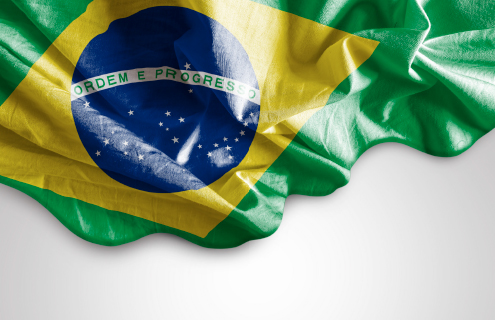While the rest of the world focuses on its beaches, fiestas and sports extravaganzas, Brazil’s funds industry is feeling a little starved of attention
Having hosted the 2014 World Cup, and with the 2016 Olympic games just around the corner, Brazil is no stranger to international scrutiny. In the asset management and hedge funds space, however, it’s a lack of interest that’s becoming notable. As the economy flags and growth predictions remain lacklustre, the industry is suffering a drought that’s not looking to ease up any time soon.
According to Darius McDermott, managing director of Chelsea Financial Services, investment is South America is on the up, and Brazil is a large part of that, making up 42 percent of the Morgan Stanley Capital International Latin American index. Despite this, many investors still consider Brazil funds as too high-risk.
“We have yet to see large flows into single Brazilian funds,” says McDermott.
“There have also been considerable tailwinds for the Brazilian economy and political upheaval which has deterred some investors.”
The effects are clearly more profound for Brazilian firms. Ernesto Leme, COO at São Paulo-based Claritas Investimentos, has not only seen a lack of investment coming in to Brazil, but also Brazilian investors looking elsewhere.
He says: “Foreign flows to Brazilian funds have diminished in the past two years. This is due, mainly, to of the political and economic challenges that the country has recently faced.”
“On the contrary, we are experiencing additional interest from Brazilian investors in foreign assets.”
Leme has seen an increase in Brazilian investment in global fixed income and equities, while new regulations to be implemented in July will make investment in international assets easier by reducing the minimum investment. Funds are leaving Brazil at an alarming rate, without the inflow required to balance it out.
McDermott says: “Investment from outside of Latin America is vital for the growth of the markets. The injection of foreign capital investment drives employment, productivity, and helps to build more sustainable societies, while lifting many out of poverty as economies improve.”
The implication is that it’s not the markets that are causing the problem, or a lack of demand for funds in the region as a whole, as some South American markets are seeing an almost uncharacteristic uptick.
Culturally, however, this a hugely diverse part of the world, and its almost impossible to compare countries. It becomes particularly difficult when talking about the financial sector, and even more so when discussing investment.
McDermott says: “Latin America is a very diverse set of countries. For example, while Mexico may be booming, Venezuela is virtually un-investable.”
Leme suggests that, at least partially, these are simply struggles that come hand-in-hand with a developed and sizable market. He says: “While some countries like Argentina, Venezuela and Brazil face important challenges, Colombia and Peru—despite being much smaller markets—are doing better. If we consider only sophistication and market liquidity, the Brazilian market is much more developed than the other regional markets.”
It is this size that makes Brazil so hard to analyse on its own. Leme calls it “a country of continental size”. At just over 8.5km square, it is larger than mainland US, and the fifth largest in the world in terms of both land mass and population.
It is, however, well positioned to receive investment from outside the Latin American region. Claritas sold 60 percent of its equity to Prinicpal Financial Group (PFG), a Fortune 500 company based in Iowa, in 2012. The company prides itself in its protection of its investors, and its experience in Brazilian investment.
“We have always prepared our company to receive foreign investors. The due diligent process that happened prior to PFG´s acquisition reassured that. We have a sound investment process in every asset class that we participate.”
He added: “We are strong believers in diversification, not only in asset class diversification but also international diversification.”
Through hedge funds, Leme argues, clients can achieve this diversification, creating a well-balanced and therefore safer portfolio. They are by no means risk-free, though, and, as McDermott says, until the Brazilian economy gets back on track, any investment at all comes with an element of risk.
Inflation in Brazil is expected to reach 7.8 percent this year, while growth is predicted to be non-existent a -0.7 percent.
“Brazil’s stubborn high level of inflation has been a major concern,” says McDermott.
“Brazil’s economy has been shrinking for years, but the key risk is the newly re-elected government’s failure to get economic progress back on track. Corruption and corporate governance remain a constant concern.”
Leme echoes this, saying: “The main risks today are political and economic. Both of these risks have a direct impact not only in the currency valuation but also in the asset prices.”
It seems that, for the time being, there is little that asset managers and fund administrators can do to encourage investment in Brazil, without the economy to support them. Perhaps though, such high-risk and questionable markets could actually lead to a new kind of investment.
McDermott says: “Brazil’s exposure might now interest value investors, who will see the region as unloved. I think there are opportunities and some valuations look tempting.”
“But, I would be cautious, as the region is so vulnerable to shifts in investor sentiment and the outlook is so questionable. The only way to make money will be to pick the right individual stocks, and there are some good Latin American equity managers out there doing just that.”



